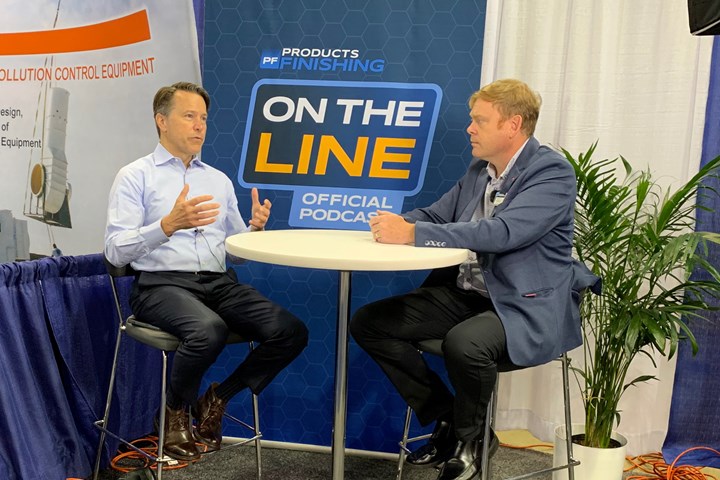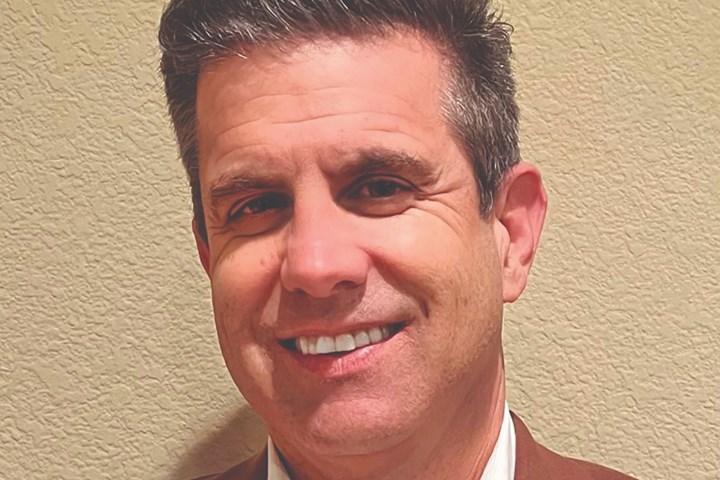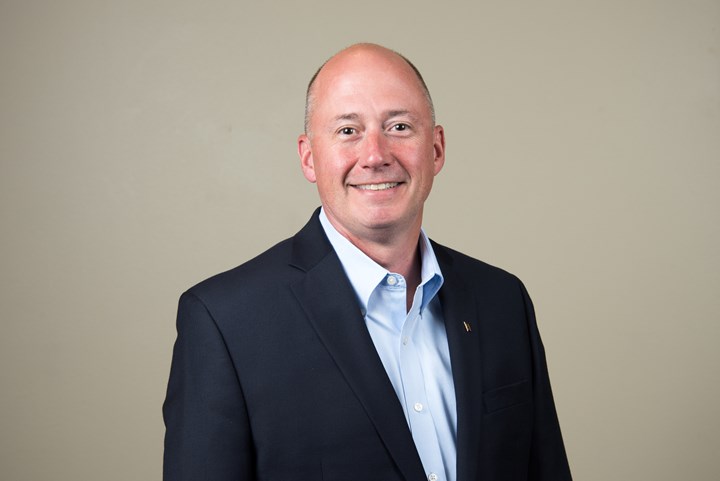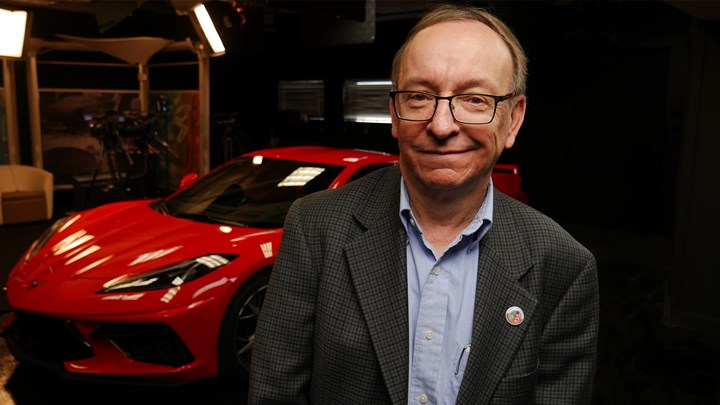On the Line: The Year in Review
As 2022 comes to a close, Products Finishing’s On the Line column offers a look back at insights gleaned from industry interviews over the past year and what may be on the horizon for 2023.
Share

Christian Richter discusses the NASF’s advocacy work on behalf of the industry. Richter sat down with Products Finishing for an On the Line interview at SUR/FIN 2022.
Photo Credit: Products Finishing
The end of 2022 marks the completion of the second full season of Products Finishing’s On the Line (OTL) column. PF launched its interview column in 2021 alongside the debut of its corresponding OTL podcast. The overarching idea was to explore multiple avenues for bringing you the voices of the finishing industry — from the workers on the shop floor to insights from suppliers to advocates for the industry working in Washington, D.C., to represent the industry on regulatory policy issues.
The stories featured in OTL delve into trends that are shaping our industry. From new and evolving manufacturing trends to supply chain challenges to workforce concerns, these are the issues that are top of mind for the people who move our industry forward. This retrospective installment of OTL takes a look back at some of those conversations from this past year with an eye toward what we can expect and prepare for as we embrace 2023.
Regulations
One of the biggest topics on the minds of metal finishers is the regulatory discussion revolving around some of the hazardous materials used for finishing processes. While PFAS chemicals and hexavalent chromium have been the subject of regulatory scrutiny for a number of years, this past year saw a great deal of regulatory policy discussion surrounding these materials in particular. The California Air Resources Board (CARB) has proposed a phaseout deadline for hexavalent chromium use in decorative plating by 2027. Meanwhile, the EPA has indicated that it plans to issue a new proposed drinking water standard for PFOS and PFOA by the end of 2022 — an action that will likely impact surface finishing operations.
OTL interviews with industry experts convey some of the concerns and actions the surface finishing community is involved with in response to these increasingly strict regulations:
Both of these issues [hexavalent chromium and PFAS] are very complex. They’re challenging from both a policy standpoint and an execution standpoint to actually make these big leaps happen across the industry supply chain from the manufacturers and suppliers to the applicators and the automotive OEMs.
I think what’s really important is that we always show up first to regulators when they see that there’s something new and potentially problematic or challenging on the horizon. Our point in doing this is to defend the industry against regulations that can impose unjustified costs or stretch the industry in ways that aren’t viable.
We want to make sure that we put the solutions on the table voluntarily, and proactively work with all the right stakeholders in our community, and with our government to ensure that the right decisions get made.
— Christian Richter, the Policy Group representing the NASF

Vince Noonan
Photo Credit: MFASC
One of the goals is to continue to work with everyone involved to try to make rules that are fair and equitable. Sensible emission-based rules will always be our goal. This type of rulemaking will continue to cut down on emissions and keep these well-paying jobs in the same neighborhoods the environmental justice communities are fighting for.
I want these businesses to be here 35, 50, 100 years from now. It’s about doing things the right way and that’s how we survive. It’s about real advances and being able to drive that change, showing that we are a technologically advanced group of businesses that can make an impact in the world, which includes environmental leadership. We’re here to make that connector last longer, we’re here to make that tailpipe more corrosion resistant, as it is shiny, we’re here to make that electric vehicle stay on the road for an extra few years which is going to help the environment and we’re here to make sure that plane stays in the air. We are Surface Finishers; we are professional, technology leaders and we’re going to do it the right way.
— Vince Noonan, CEF, Vice President Strategic Operations at Sheffield Platers and MFASC President
Emerging technologies
Change brings new opportunities, and it goes without saying that the automotive landscape has experienced a great amount of upheaval the past few years. The COVID pandemic and related events from chip shortages to reshoring efforts to workforce shortages, as well as environmental concerns and political events, have all played a part in pushing the auto industry toward changes that will shape the industry for years to come. The electrification of vehicles is also a large part of that change with all of the major OEMs investing in new facilities and capabilities geared toward increased production of electric vehicles (EVs) and hybrids. The role finishers play in the production of automobiles will continue to be an important one and finishers should be on the lookout for new opportunities not only in the manufacturing of new vehicle components, but also parts that will be used to build the infrastructure needed to support electrified vehicles.
Here are some responses that OTL featured from industry experts discussing emerging automotive trends:

Lynch
Photo Credit: MacDermid Enthone
What really matters is today and how we position ourselves to support our customers for tomorrow. Where is the industry going? What are the things that are challenging our customers? What do we need to do to resource that and to make sure that we can carry the ball forward and continue to support our customers effectively as we have for the last 100 years?
For example, if you take the lightweighting of vehicles and EVs, we have this ongoing trend around aluminum finishing — the use of aluminum is increasing significantly year over year (the last 10 years or so it’s a 10% CAGR usage — it’s really rising). Making sure that we have the technologies that apply to those meet the needs of those finishes and those new applications is really important.
— Richard Lynch, vice president of chemical supplier MacDermid Enthone Industrial Solutions

Vasilash
Photo Credit: Gardner Business Media
The auto industry is making huge investments, and this means that they’re going to be making lots of different things that they weren’t making before. And this, I think, is a huge opportunity that cannot be overestimated. At the same time, I think what the people in the finishing community need to keep foremost in their minds is that much of what they're doing now is applicable to these new products.
With regard to EVs, the internal combustion engine gets replaced by a motor (or motors, depending on the strategy that the vehicle manufacturer is taking). Those motors are pretty much conventional vis-à-vis motors used for other industries. Then there’s the battery — it’s breathtaking to see the number of battery plants that have been announced by General Motors, Ford, Stellantis, Volkswagen, you name it — Mercedes just opened one in Alabama. For finishers that are savvy in terms of dealing with electrical equipment, this may be a big opportunity.
— Gary Vasilash, transportation editor, Gardner Business Media
To the future
As we look to 2023, these issues and others will shape the business of finishers. Products Finishing and On the Line will be there to help keep you in tune with the voices of the finishing community as the industry moves forward. If you have a topic you’d like to see featured in 2023 or would like to propose an interview for OTL please email me at sfrancis@pfonline.com.
Listen to a podcast retrospective of some of PF’s best On the Line interviews from 2022 at short.pfonline.com/OTL26.
Related Content
Fast Detection Solution Pursues PFAS Remediation
With the development of a quick detection testing unit, platers can determine the best action to deplete their PFAS more efficiently.
Read MoreFinishing Another Year — Looking Back at the Trends of 2023
Products Finishing reflects on a year of reporting on the surface finishing industry and looks ahead to what may be in store for 2024.
Read MoreContinuous Learning Helps Industry Steward Keep Up the Pace
With a zeal for chemistry, a life-long love of learning, a good teacher and supportive employer, Rebecca Bennett, Products Finishing’s first Champion of the Industry, became passionate about the electroplating industry, spawning her success and loyalty to Precision Plating Co.
Read MoreHexavalent to trivalent chromium — the environmental benefits
Regulatory pressures to switch from hexavalent chromium to trivalent alternatives are a growing concern for many finishing operations. In this Products Finishing Ask the Expert clinic, Brittany McKinney of Pavco discusses the environmental considerations driving these regulations.
Read MoreRead Next
The Best Tape for High-Temperature Applications
High-temperature tapes are designed with maximum heat ratings indicating the highest temperature they can withstand for a very short time.
Read MoreAlkaline Cleaning Guide
Gregg Sanko, Senior Chemist, Oakite Products, Inc. provides an overview of the alkaline cleaning process.
Read MoreDelivering Increased Benefits to Greenhouse Films
Baystar's Borstar technology is helping customers deliver better, more reliable production methods to greenhouse agriculture.
Read More






















